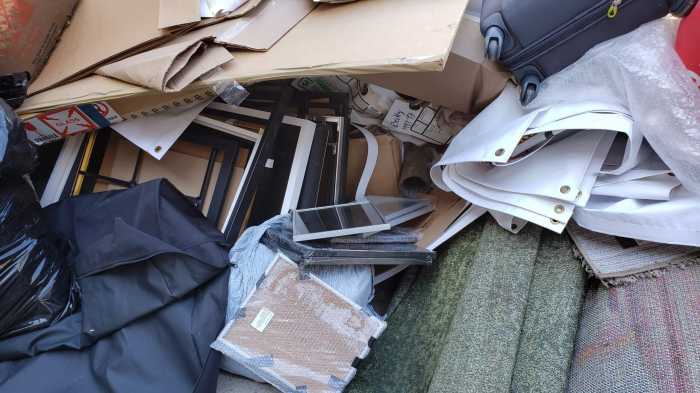In a utopic Brooklyn, housing issues are resolved, climate impact has been neutralized, everyone came together as a community after the COVID-19 pandemic and art is everywhere. Those are the most dominant ideals depicted by more than 200 artists selected for the latest Arts Gowanus exhibit “Brooklyn Utopias: Along the Canal,” which opened this past weekend.
A curatorship of paintings, drawings, photographs and sculptures from local artists were unveiled to the public with a two-day party at its three viewing locations, The Old Stone House, JJ Byrne Playground and Coffey Park, on April 9 and 10.
According to curator Katherine Gressel, this year’s artistic visions of “a better Brooklyn” include various pieces on “the implications of developing on this very polluted land that’s undergoing clean up.”
In 2020, a cleanup of toxic waste began at the Gowanus Canal. It is a milestone for one of the most polluted waterways in America, and for the industrial neighborhood. The project is expected to eventually transform a federally designated toxic Superfund site into acres of parks, shops and some 8,000 housing units.
The series of exhibitions, Brooklyn Utopias, has been around since 2009. The concept, surged during the economic recession as Brooklyn started to become increasingly popular among artists and young New York residents and developers simultaneously.

“I noticed a lot of artists were responding to that in their work and I wanted to bring them all together,” said Gressel. “There’s still a lot of competing attitudes out there, about what would really make the ideal Brooklyn. So, this is a really important time to address how can we make it more equitable and inclusive and the global implications of the rezoning that is happening in Gowanus.”
This year’s art collection is a reflexion of the rezoning order that passed last November, said Arts Gowanus program Director, Johnny Thornton. Activists oppose the initiative, claiming the area is an environmental hazard and the proximity to the canal makes the neighborhood especially prone to flooding.
For artist Jeremy Dennis, the inspiration of his submission — a photo of an abandoned and vandalized building surrounded by cargo trucks — came from a utopia in the past.
“We kept the indigenous name of the place,” he said. “What must have been a beautiful natural landscape is still remembered even though there is so much change. Gowanus still exists.”
Dennis says the true definition of a utopia is somewhere where everyone has a voice, a place of arts, museums, politics, and wherever there is learning.
“Brooklyn Utopias: Along the Canal” is on view through June 26 with an indoor gallery at Old Stone House and two outdoor public art displays in JJ Byrne Playground and Coffey Park.


























